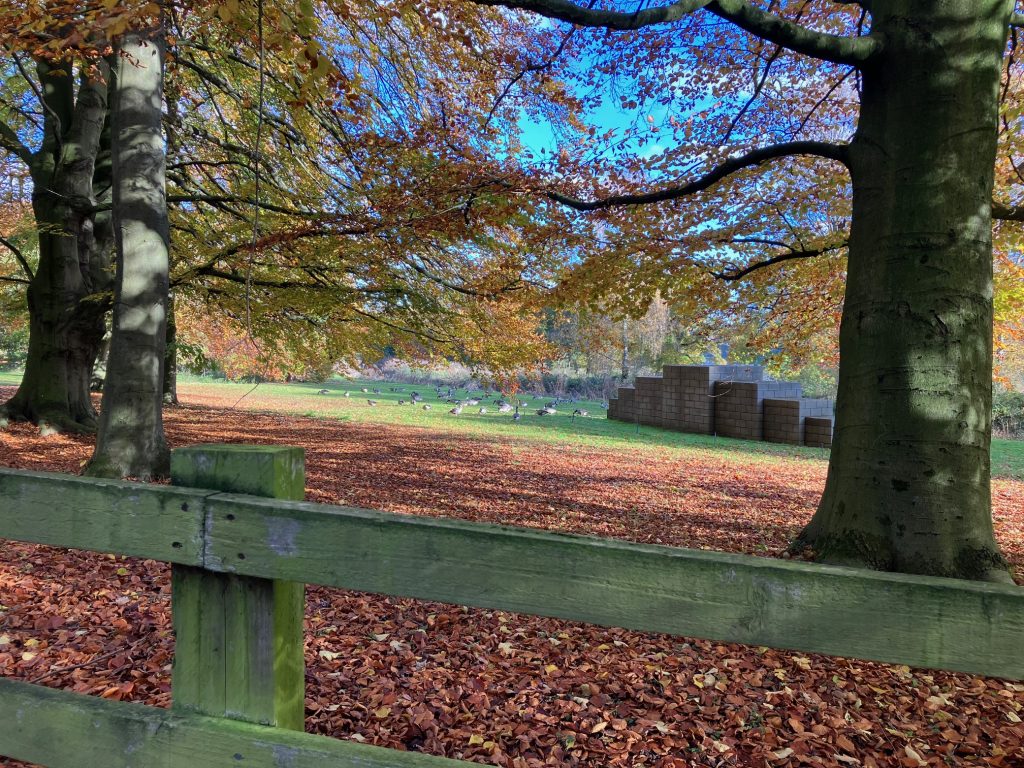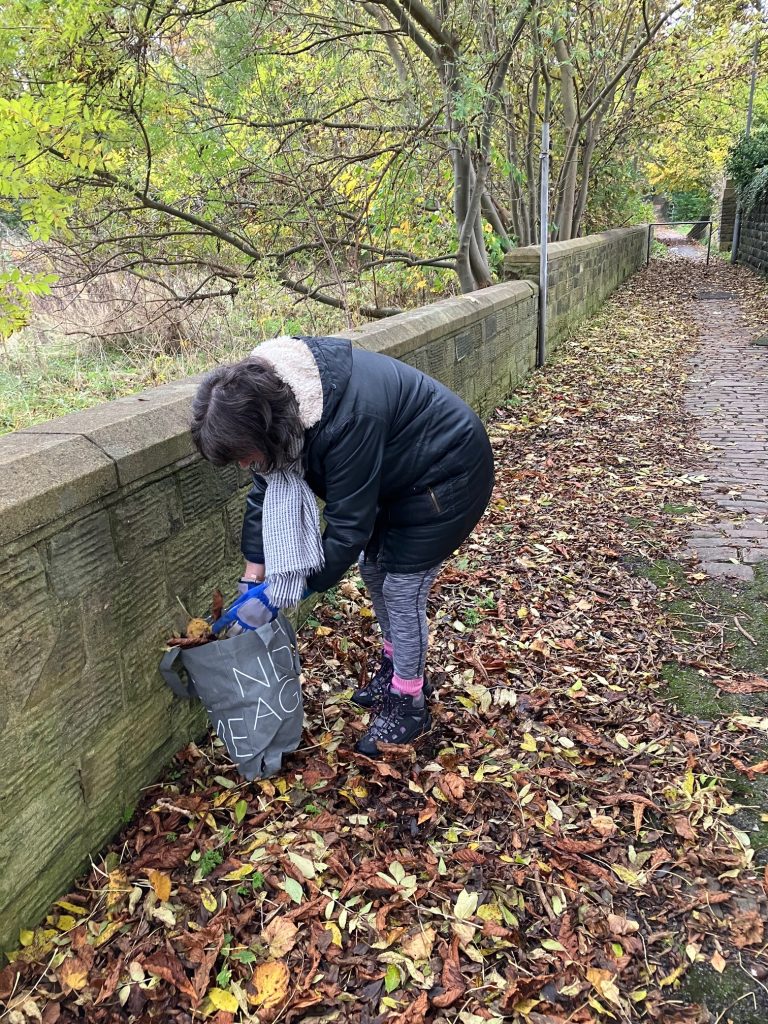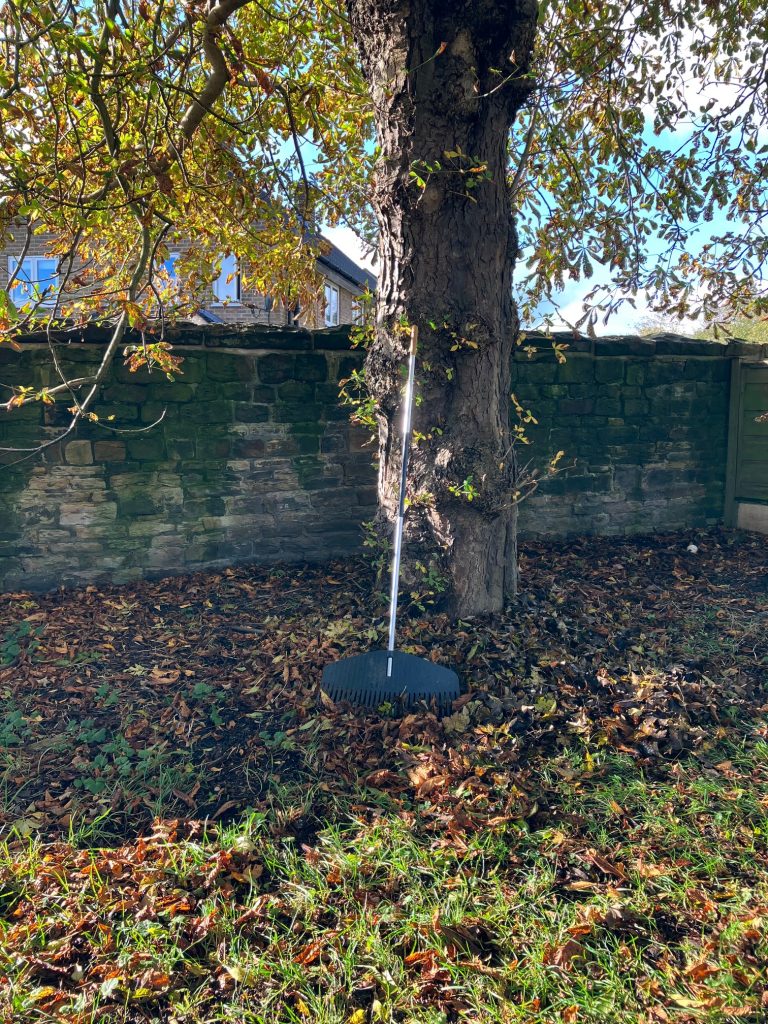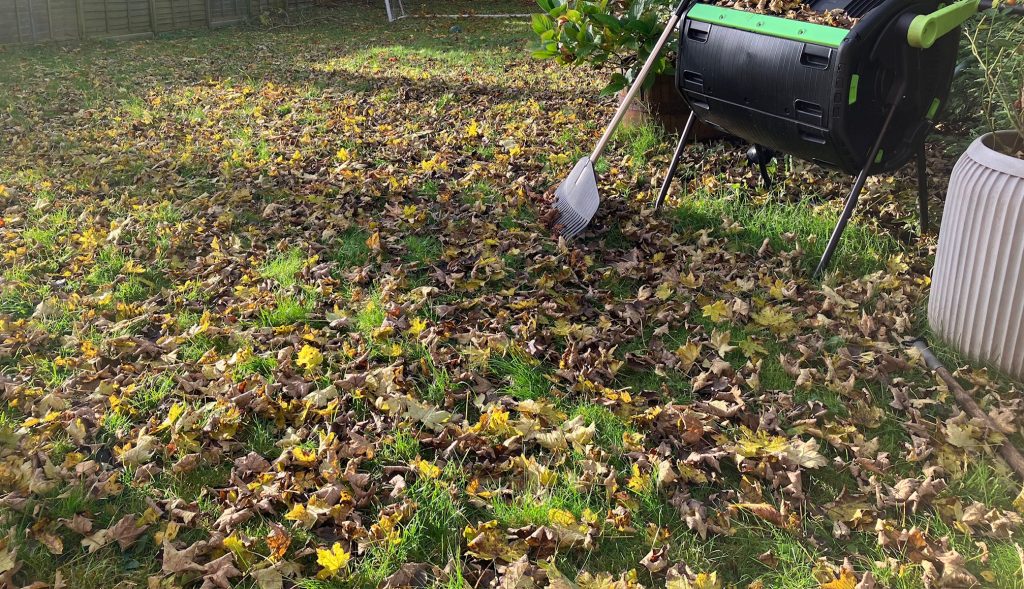Sometimes you think you’re doing the right thing, only to find out that maybe you’re not.
I’m thinking of autumn leaves and what we should do with them.
Our family came to composting the easiest way, through making leaf mould – fallen autumn leaves that are left to rot down. Our garden receives an abundance of leaves every autumn, as it’s home to a horse chestnut tree and overlooked by several other trees. We soon got out of the habit of paying the council to take away bags of leaves as the cost mounted. So we got two 900L Graf Thermo King composters and started making leaf mould.
But once I realised what a fantastic resource leaves were (they build soil and store carbon), I couldn’t bear to see them lying around all over the place going to waste. I read about what sounded like a great solution – eco-warriors all over the world who sweep the pavements in their neighbourhoods to collect leaves for composting. So I joined in.
Pollution
Then I read something else – that you shouldn’t sweep busy streets because the leaves could be contaminated with pollution from traffic fumes. That made sense, so I started to sweep leaves from grassed areas (after getting permission).
Then I read that you should leave the leaves on soil and around trees and hedges as they replenish the soil with nutrients as they decompose, providing food throughout winter. Apparently removing leaves contributes to the slow death of trees from malnutrition. Aaaargh!
At this point my husband suggested that I stop reading.
Ignoring him, I read somewhere else that leaves are low in nutrition because all the nutrition is absorbed back into the tree before the leaves fall. As Homer Simpson might say, Doh!

Autumn glory – leaves left around the trees at Yorkshire Sculpture Park, Wakefield.
I remember last year the Royal Horticultural Society advised people to leave autumn leaves on borders as they encourage worm activity and increase humus content in soil. But then others piled in to say that leaves have an annoying tendency to not stay where they’re put, with the wind teasing them out and repositioning them on the lawn or, dangerously, the garden path. And in our case the hallway too. So what to do?
Ideally you should only collect leaves from hard surfaces as they would otherwise only be blown or washed away by wind and rain. But you should rake them off lawns and plants to prevent them smothering growth.
The solution I came up with is to go to alleyways (or ‘ginnels’, if you come from Yorkshire) where there is no traffic so no fumes and no soil/trees needing to be fed over winter. On pathways leaves are wasted and the only thing they create is a slip hazard. You just need to watch out for hidden dog poo, but as dog lovers we’re used to that.

Gathering leaves that would go to waste
We have now taken to wrapping our garden tree with a rich leaf-blanket, or bug rug as I call it. If the leaves are dry they will blow away so we dampen them with rainwater from our water butt to weigh them down a bit.
Left leaves also create a habitat for insects, beneficial bacteria and pollinators. Soil apparently needs more winter cover than you might imagine – not a stingy couple of centimetres, but a big generous serving. As well as feeding the tree it will also protect the roots from weather extremes.
As a proud member of the Earthworm Society of Britain, I was interested to read about the Leave the Leaves Project, which will investigate the benefit of leaving leaves in London parks, comparing the earthworm population in areas that are cleared of leaves and areas where the leaves are left to be dealt with by earthworms. Volunteers can register via The Royal Parks website.

The rake’s progress – making a ‘bug rug’ for around trees
Storing leaves for compost
Stockpiling autumn leaves for composting ensures you have readily available Browns to balance the Greens. While food waste is usually plentiful, providing you with Greens, finding more carbon-rich Browns content can be harder.
Shredding the leaves increases the surface area in contact with microbes, speeding up decomposition. Shredded leaves also take up less space if you don’t have much room to store them and they’re also less likely to mat down in a bin, excluding air from the compost.
If you don’t have a shredder, you can mow over them; set your mower on a high cut setting and mow them up, using the grass collector added to the back of the mower. You can also whizz them up with an edge trimmer in a dustbin (like using a food stick blender) or use a pair of hedge clippers and a board.

Rake leaves on lawns to prevent them smothering growth
Store dry leaves in old compost bags or thick black bags next to the compost bin so they’re ready when needed. Then when you add a kitchen caddy of food waste you can add a caddy full of leaves to the bin, so providing the good balance of nitrogen and carbon necessary for efficient composting.
Some leaves break down more quickly than others. In his book A Gardeners’ Guide to Composting Techniques, Rod Weston says the leaves of common UK trees, such as oak, beech and hornbeam, break down comparatively easily to produce good-quality leaf mould, while horse and sweet chestnut and sycamore are slower to break down.
‘Conifer needles are slower still. They should be treated separately, in any case, as they produce an acidic material, which is ideal for mulching ericaceous plants.’
What are the benefits of leaf mould?
Leaf mould has similar properties to peat but has the benefit of being a renewable resource. Like compost, it will improve the structure of your soil and increase water retention by around 50 per cent. Fallen leaves are soil-building, carbon-storing materials.
How do I make leaf mould?
Making leaf mould is a simple but slow process, relying on fungi rather than the heat-generating bacteria of the composting process.
The most basic way of storing leaves is to keep them in a black bin bag, pierced at the bottom and sides to allow the contents to breathe. If the leaves are very dry, moisten them with stored rainwater before putting them in the bag. You don’t need to add anything else – just the leaves, but adding some grass will speed up decomposition.
If you prefer a container, the Thermo King compost bins that we use make life simple because:
- Two large flaps make it easy to remove compost.
- The lid allows humid air to escape and is adjustable to summer and winter weather conditions to regulate air circulation.
- The base (optional) allows worms and insects to enter while deterring rodents.
Check the leaves from time to time, especially during hot weather, to ensure the contents are still wet.
How can I use my leaf mould?
If leaves have been left to rot for two years or more, they can be used as seed-sowing compost or mixed equally with sharp sand, garden compost and soil for use as potting compost.
If less than two years old, leaf mould can be used as autumn cover for bare soil in winter. It looks and smells like compost – dark brown in colour and crumbly in texture.
In his book The Science of Gardening, Dr Stuart Farrimond points out that in nature nothing is wasted, ‘and all the soil nutrients upon which plants depend, including nitrogen, phosphorus, potassium and calcium, are replenished in forms ready for roots to take up. Far better than feeding your plants is to feed your soil and support this natural nutrient recycling system.’
Julie


